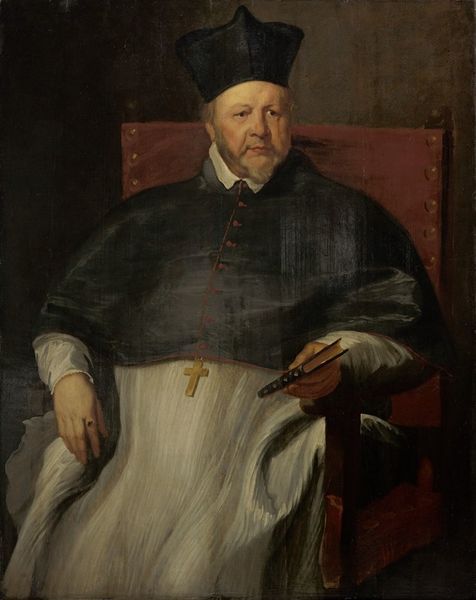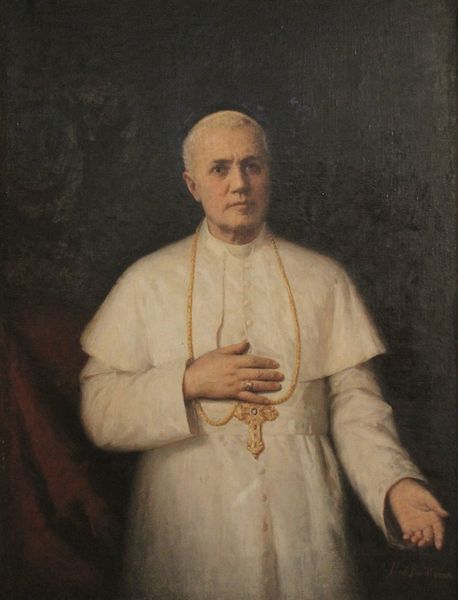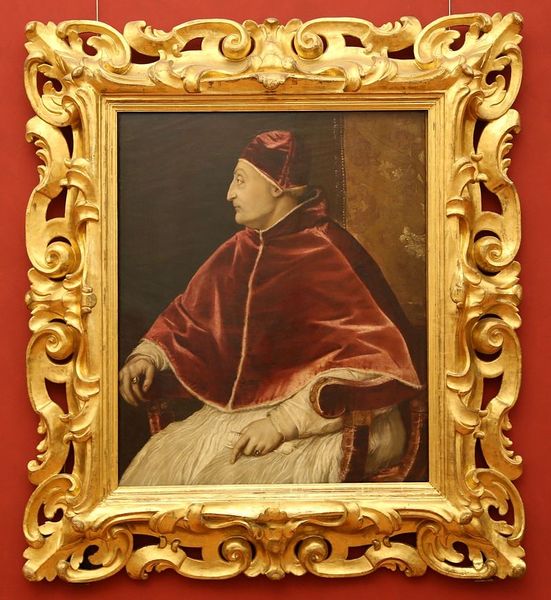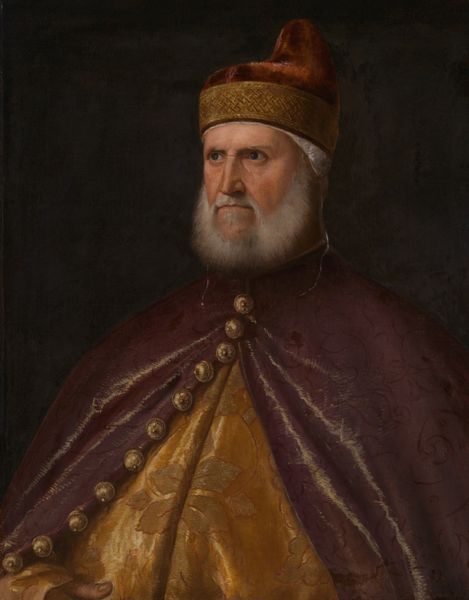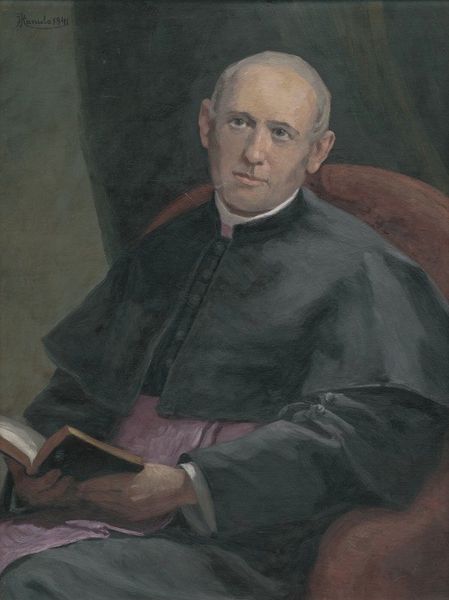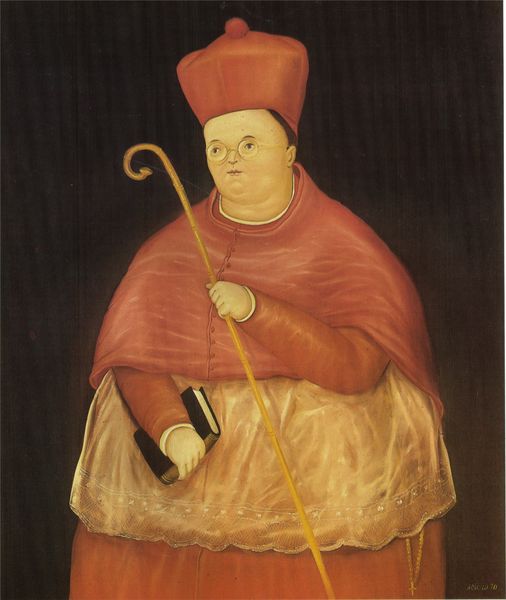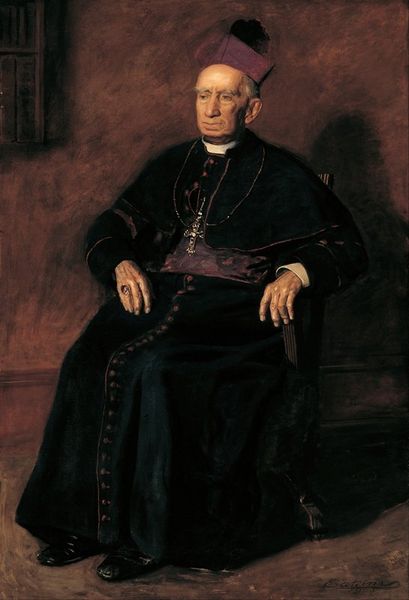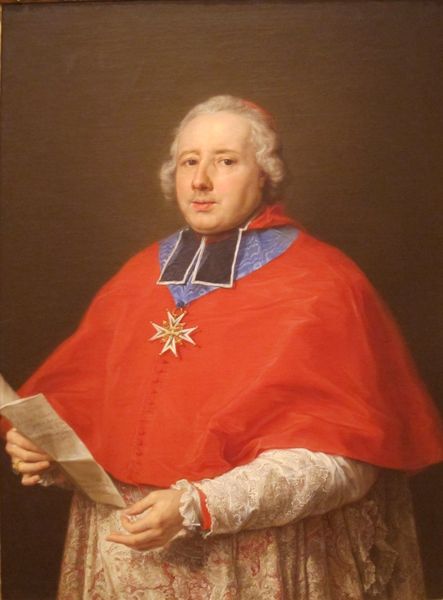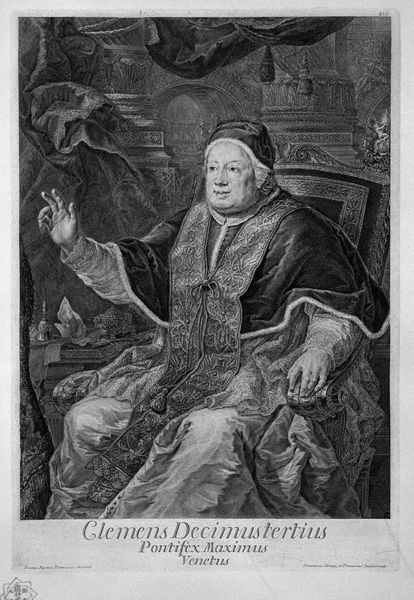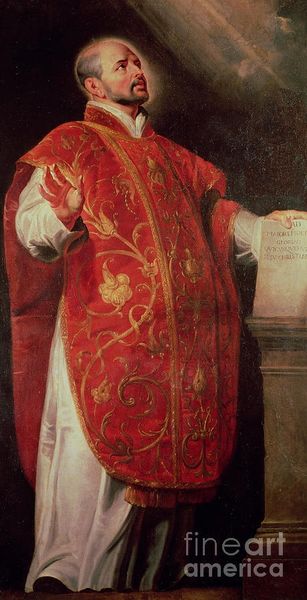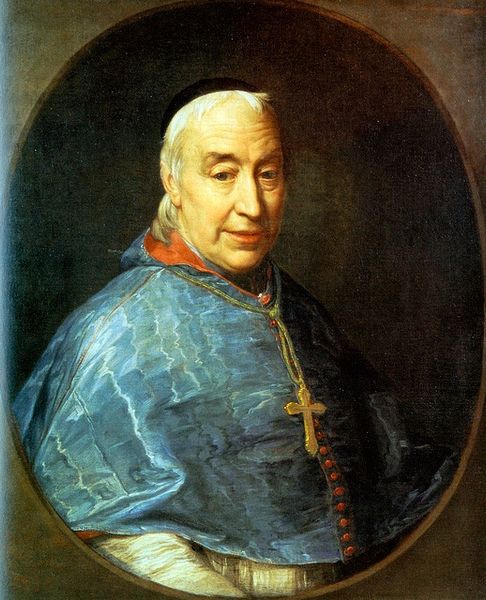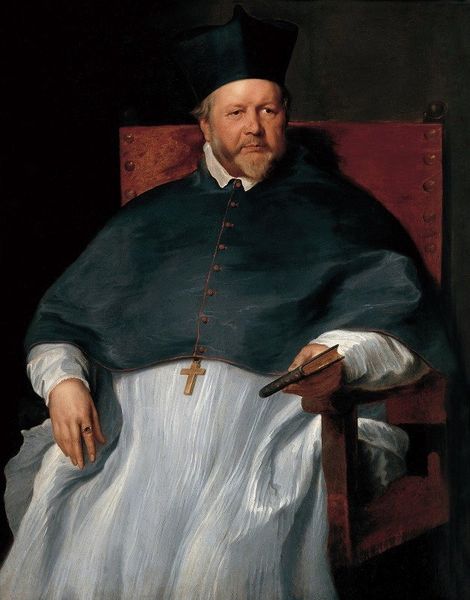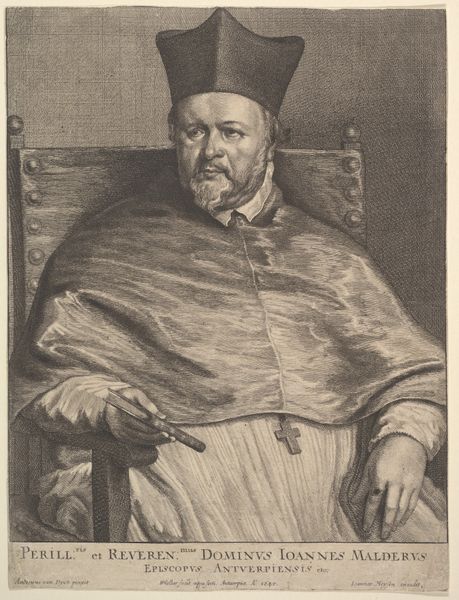
painting, oil-paint
#
portrait
#
painting
#
oil-paint
#
oil painting
#
academic-art
#
realism
Dimensions: 132.5 x 91.5 cm
Copyright: Public domain
Editor: Here we have Antonio Paoletti's "Portrait of the Bishop Modesto Farina," created in 1895 using oil paint. It strikes me as a very formal depiction; what draws your eye when you look at this portrait? Curator: Immediately, the interplay between the labor invested in the Bishop’s garments and the depiction of his authority. Think about the time and skill needed to produce those intricate lace cuffs, contrasting sharply with the implied power structure he embodies. Who were the makers of these textiles? Editor: I never thought of that. The focus is so much on him, the subject, not who created his clothing. It almost feels... exploitative now that you mention it. Curator: Precisely. Consider the economics at play here: the artist creating a product - this portrait - commissioned by someone, possibly within the Bishop’s circle. Who benefited most from this transaction and how? What narratives are consciously left out? Editor: So you’re saying this isn’t just a picture of a Bishop, but a visual representation of the labor that enabled his position and its display. Curator: Yes. The gold chain, the crimson cloth, the paper within the book, these are all commodities made through exploitation. Think about the extraction of the gold from the Earth, by what populations and at whose expense? Editor: Wow. I'll never be able to look at a portrait the same way again! It makes you think about the social context that the paintings were made. Curator: And that is a critical element. Let us always examine what materials go into these products and the cost both materially and socially to bring those items to realization.
Comments
No comments
Be the first to comment and join the conversation on the ultimate creative platform.
